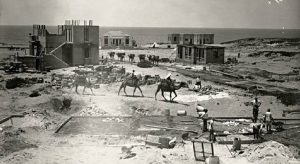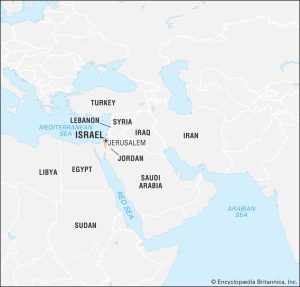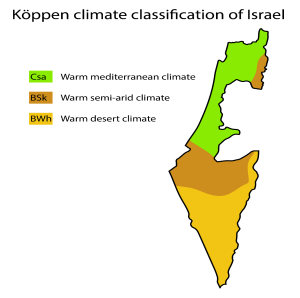History of Israel
The history of Israel dates back to ancient times, with the land being mentioned in the Bible as the promised land of the Israelites. Throughout history, the land of Israel has been conquered and ruled by various empires, including the Assyrians, Babylonians, Persians, Greeks, Romans, and Ottomans. In the 20th century, the Zionist movement emerged, which sought to establish a Jewish homeland in Palestine. This movement ultimately led to the creation of the state of Israel in 1948, following a UN partition plan.
According to the Bible, the Israelites first arrived in the land of Canaan, which is now modern-day Israel, in the 12th century BCE. The Israelites established a monarchy under King Saul in the 11th century BCE, followed by King David and King Solomon. However, the kingdom split in the 10th century BCE, with the northern kingdom of Israel being conquered by the Assyrians in 722 BCE, and the southern kingdom of Judah falling to the Babylonians in 586 BCE.
Over the next several centuries, the land of Israel was ruled by various empires, including the Persians, Greeks, and Romans. In 70 CE, the Romans destroyed the Second Temple in Jerusalem, which had been built by King Herod, and expelled the Jews from Jerusalem.
Throughout the Middle Ages, the land of Israel was ruled by various Muslim empires, including the Umayyads, Abbasids, Fatimids, and Mamluks. The Ottoman Empire conquered the region in 1516 and ruled it for the next four centuries.
In the late 19th century, the Zionist movement emerged, which sought to establish a Jewish homeland in Palestine. This movement gained momentum in the early 20th century, as Jews began immigrating to Palestine in greater numbers. In 1917, the British government issued the Balfour Declaration, which stated its support for the establishment of a Jewish homeland in Palestine.
Following World War II, the UN partition plan was proposed in 1947, which called for the division of Palestine into two states: one Jewish and one Arab. The plan was accepted by the Jews but rejected by the Arabs, and violence erupted between the two sides. On May 14, 1948, the state of Israel was officially declared, and the first Arab-Israeli war broke out.
Since then, Israel has fought several wars with its Arab neighbors, including the 1967 Six-Day War, in which Israel captured the West Bank, Gaza Strip, and Golan Heights. Israel has also been involved in ongoing conflicts with the Palestinians, who seek an independent state in the West Bank and Gaza Strip.
In conclusion, the history of Israel is a complex and often contentious one, marked by conflict and political upheaval. From its origins in biblical times to the modern-day state of Israel, the land has been shaped by various empires, religions, and ideologies, and remains a deeply contested and important part of the Middle East.

https://www.myjewishlearning.com/article/modern-israeli-history-a-timeline/
Location
Israel is a small country located in the Middle East, bordered by Lebanon to the north, Syria to the northeast, Jordan to the east, Egypt to the southwest, and the Mediterranean Sea to the west (CIA, 2022). It is situated on the eastern end of the Mediterranean Sea and has a land area of approximately 20,770 square kilometers (World Bank, 2022).
The country’s location has played a significant role in its history, culture, and political affairs. It lies at the crossroads of three continents – Europe, Asia, and Africa – and has been a center of trade and cultural exchange for centuries (Shahar, 2018).
Israel’s location in the Middle East has also made it a hub for political and military activities. It has been involved in conflicts with neighboring countries and has been a mediator in peace negotiations in the region (Sela, 2021). The country’s location has also contributed to its strategic importance for world powers and its role in international politics (Saideman & Ayres, 2019).
In summary, Israel is a small country located in the Middle East, bordered by Lebanon, Syria, Jordan, Egypt, and the Mediterranean Sea. Its location has played a crucial role in its history, culture, and political affairs, making it a hub for trade, cultural exchange, political and military activities, and a center of strategic importance for world powers.

https://www.britannica.com/place/Israel
Climate
Israel has a varied climate due to its location in the Middle East and its proximity to the Mediterranean Sea. The climate can be divided into four main regions: the Mediterranean coast, the northern mountainous region, the Jordan Rift Valley, and the Negev desert (Raz, 2018).
The Mediterranean coast experiences hot summers and mild winters, with the average temperature in July being around 29°C and in January around 13°C (Israel Meteorological Service, 2021). The region receives most of its rainfall during the winter months, with an annual average of 500-800 mm (Raz, 2018).
The northern mountainous region, including the Galilee and Golan Heights, has a cooler and wetter climate due to its higher altitude. Summers are mild and rainy, and winters are cold and wet, with occasional snowfall (Raz, 2018). The average temperature in July is around 24°C, while in January it can drop to 8°C (Israel Meteorological Service, 2021).
The Jordan Rift Valley, which runs from the Sea of Galilee to the Red Sea, has a hot and dry climate. Summers are extremely hot, with temperatures reaching over 40°C, while winters are mild, with temperatures around 18°C (Raz, 2018). The region receives very little rainfall, with an annual average of only 50 mm (Israel Meteorological Service, 2021).
The Negev desert, covering more than half of Israel’s land area, has a hot and dry climate. Summers are scorching, with temperatures often exceeding 40°C, and winters are mild, with temperatures around 15°C (Raz, 2018). The region receives very little rainfall, with an annual average of only 50-150 mm (Israel Meteorological Service, 2021).
Overall, Israel has a Mediterranean climate, characterized by hot, dry summers and mild, wet winters. However, the climate varies significantly across the country, from the cooler and wetter northern mountains to the hot and dry desert regions in the south.

https://commons.wikimedia.org/wiki/File:Koppen_climate_classification_of_Israel.png
Languages
The languages of Israel reflect the country’s complex history and diverse population. The two official languages of Israel are Hebrew and Arabic, and there are also many other languages spoken by minority communities.
Hebrew is the most widely spoken language in Israel, and it is also the country’s official language. Hebrew is a Semitic language that has been spoken for thousands of years and has a rich history. In ancient times, Hebrew was used as a sacred language for religious texts and rituals, but it fell out of use as a spoken language around the 4th century CE. It was revived in the late 19th century as part of the Zionist movement, which aimed to establish a Jewish state in Palestine. Hebrew was chosen as the language of the new state because it had been the language of the ancient Israelites and was seen as a symbol of Jewish identity.
Today, Hebrew is the mother tongue of the majority of Israel’s Jewish population, and it is also used as a second language by many Arab citizens of Israel. Hebrew is taught in schools from an early age, and it is the language of government, the media, and business. However, there are differences between the Hebrew spoken in Israel and the Hebrew used in religious texts and literature. Modern Hebrew has been heavily influenced by European languages such as German and Yiddish, and it has also borrowed words from Arabic and other languages spoken in the region (Koren, 2016).
Arabic is the second official language of Israel, and it is spoken by the country’s Arab citizens, who make up about 20% of the population. Arabic is also spoken by Jewish citizens of Arab origin, as well as by some non-Arab Israelis who have learned it as a second language. Arabic is a Semitic language like Hebrew, and it has been spoken in the region for over a thousand years. Modern Standard Arabic is the official language of the Arab world, and it is used in formal settings such as government and education. However, there are many regional dialects of Arabic that vary significantly from one another.
In Israel, the most common dialect of Arabic is the Palestinian dialect, which is spoken by Palestinian citizens of Israel as well as by Palestinians in the West Bank and Gaza Strip. There are also other dialects of Arabic spoken by other minority communities in Israel, such as the Druze and Bedouin. Arabic is taught in schools as a mandatory subject for all Jewish and Arab citizens of Israel, but the quality of Arabic education varies widely depending on the school and the teacher (Abu-Rabia, 2017).
In addition to Hebrew and Arabic, there are many other languages spoken by minority communities in Israel. Russian is spoken by many immigrants from the former Soviet Union, and Amharic is spoken by Ethiopian Jews who have immigrated to Israel. Yiddish and Ladino are spoken by some members of Israel’s Jewish community who have roots in Europe, and English is widely spoken as a second language by many Israelis. There are also smaller communities of speakers of languages such as French, Spanish, and Hungarian.
In conclusion, the languages of Israel reflect the country’s complex history and diverse population. Hebrew and Arabic are the official languages of Israel and are the most widely spoken languages in the country. However, there are also many other languages spoken by minority communities, reflecting the diverse cultural heritage of the Israeli people.



